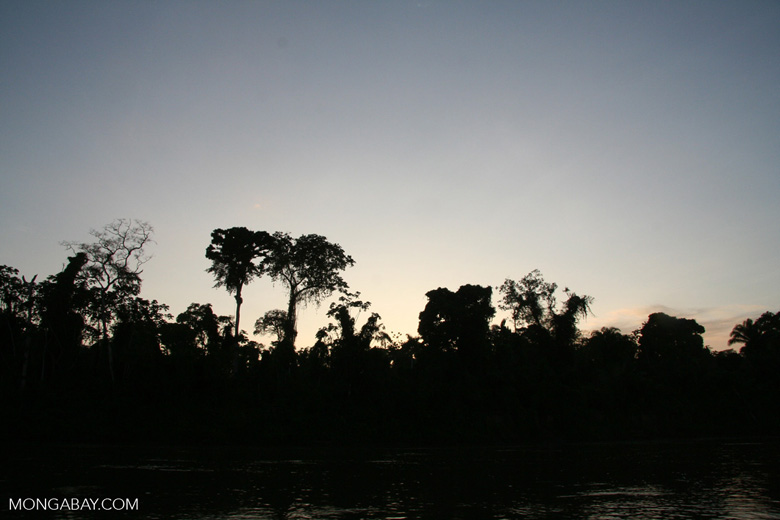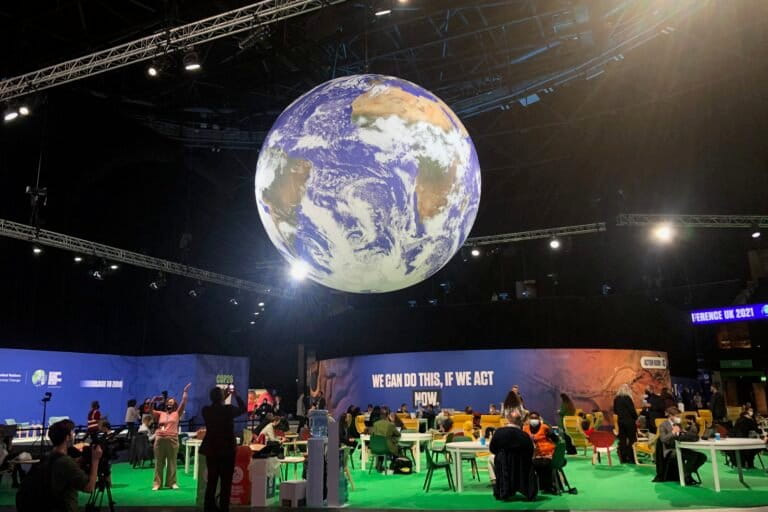U.N. carbon trading scheme holds promise and peril for tropical forests
U.N. carbon trading scheme holds promise and peril for tropical forests Mongabay.com


Suriname Aims to Be the First to Sell Paris Agreement Carbon Credits
Introduction
Suriname’s recently announced plans to sell carbon credits under the Paris Agreement’s emissions trading system have been met with both applause and skepticism by climate experts. The South American country will rely on its massive forests for the credits, which it intends to trade as so-called internationally transferable mitigation outcomes (ITMOs) under a system that has yet to be finalized. But while ITMOs are meant to help boost climate change mitigation and also be a win-win for the countries involved, some experts worry they could foster yet another market for “hot air.”
The Importance of Forests in Climate Change Mitigation
Forests absorb nearly a third of all anthropogenic greenhouse gas emissions and lock away twice as much carbon as is currently accessible across all coal, oil and gas reserves. As the world’s biggest terrestrial carbon sinks, forests play a critical part in limiting global warming to 1.5° Celsius (2.7° Fahrenheit) above pre-industrial levels, alongside efforts to cut CO2 emissions.
Suriname’s Forests and Carbon-Negative Status
About 93% of Suriname is covered by forests — part of what makes it one of just a few dozen carbon-negative nations, according to data from the United Nations Framework Convention on Climate Change (UNFCCC). This means the country absorbs more carbon than it emits. Like many forested nations in the Global South, Suriname faces challenges accessing climate finance that it says would allow it to continue being a carbon sink and help reach the goals of the Paris Agreement.

The Role of Article 6 in Emissions Trading
Under the Paris Agreement, countries submit plans, known as nationally determined contributions (NDCs), that outline their actions to reduce emissions or increase carbon sequestration. Under Article 6 of the agreement, countries can cooperate on a voluntary basis and trade emissions to achieve their climate goals.
Some emissions trading under Article 6 has been piloted in the form of decentralized multilateral agreements. Separately, carbon-related projects have begun to provide credits to private companies and individuals through voluntary markets. But a more centralized market, the provisions of which are laid out in paragraph 6.4 of the Paris Agreement, is currently being finalized. A supervisory body tasked with ironing out the details will present these plans at the COP28 climate summit in Dubai that starts Nov. 30, paving the way for the large-scale implementation of emission reductions trading by 2024.
Suriname’s REDD+ Results as ITMOs
Suriname’s plan is to convert its REDD+ results into ITMOs. REDD+ is short for reducing deforestation and forest degradation in developing countries, with the plus sign adding a focus on climate-related sustainable forest management. As envisioned by the UNFCCC, the scheme requires countries to develop a national strategy to reduce deforestation, boost forest conservation and implement a national forest monitoring system.
Based on UNFCCC data in 2021, Suriname has reduced emissions from deforestation by the equivalent of 4.8 million metric tons of CO2. It plans to sell this volume that would otherwise have been emitted for $30 per metric ton to raise $144 million that would finance activities to further halt deforestation. Honduras and Belize have also declared they will trade their REDD+ results under Article 6.
Concerns and Controversies Surrounding REDD+ Results as ITMOs
Several experts have raised concerns about translating REDD+ results into ITMOs and what that could mean for carbon trading accuracy, which has come under fire recently.
“There can be an overestimation of emissions reductions, and there are issues with permanence and forest carbon accounting,” said Jonathan Crook, an expert on global carbon markets at Carbon Market Watch, an independent watchdog. “We have seen on the voluntary carbon market, and that’s the risk that could happen again under Article 6.”
But as opposed to the voluntary carbon market, REDD+ results have been verified by the U.N., which means they are primed to be under Article 6, said Kevin Conrad, executive director of the Coalition for Rainforest Nations, which helps countries implement national REDD+ strategies and access funding for their results. The UNFCCC REDD+ program was meant to incentivize countries to stop deforestation and then pay them for that reduction, called “results-based payments.”
“REDD+ mechanism’s job was to verify results,” Conrad said.

Not everyone agrees. The debate over whether REDD+ should be included in carbon markets has a long history and is far from settled. “REDD+ is results-based payment system. But it’s not, and it wasn’t designed as a carbon crediting system,” Crook said. There are fundamental challenges in trading emissions from land-based sources like forest carbon that are almost impossible to overcome, he said. Measuring and monitoring forest carbon is much more difficult, resource-intensive and imprecise than measuring carbon from other sectors like transport or manufacturing. Forests also have different life spans than fossil fuel emissions, making conversions difficult to calculate. And forests can easily burn, get degraded or cleared for cattle pastures. Accounting for what happens retroactively to credits that have been issued needs to be better defined, Cro
SDGs, Targets, and Indicators
1. Which SDGs are addressed or connected to the issues highlighted in the article?
- SDG 13: Climate Action
- SDG 15: Life on Land
2. What specific targets under those SDGs can be identified based on the article’s content?
- SDG 13.2: Integrate climate change measures into national policies, strategies, and planning.
- SDG 15.2: Promote the implementation of sustainable management of all types of forests.
3. Are there any indicators mentioned or implied in the article that can be used to measure progress towards the identified targets?
- Indicator for SDG 13.2: Number of countries that have integrated climate change measures into their national policies, strategies, and planning.
- Indicator for SDG 15.2: Forest area as a proportion of total land area.
Table: SDGs, Targets, and Indicators
| SDGs | Targets | Indicators |
|---|---|---|
| SDG 13: Climate Action | Target 13.2: Integrate climate change measures into national policies, strategies, and planning. | Number of countries that have integrated climate change measures into their national policies, strategies, and planning. |
| SDG 15: Life on Land | Target 15.2: Promote the implementation of sustainable management of all types of forests. | Forest area as a proportion of total land area. |
Behold! This splendid article springs forth from the wellspring of knowledge, shaped by a wondrous proprietary AI technology that delved into a vast ocean of data, illuminating the path towards the Sustainable Development Goals. Remember that all rights are reserved by SDG Investors LLC, empowering us to champion progress together.
Source: news.mongabay.com

Join us, as fellow seekers of change, on a transformative journey at https://sdgtalks.ai/welcome, where you can become a member and actively contribute to shaping a brighter future.







